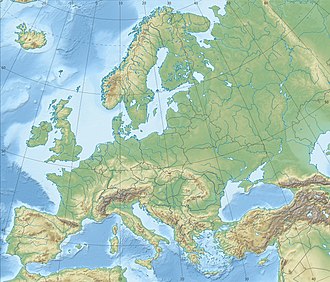This article includes a list of references, related reading, or external links, but its sources remain unclear because it lacks inline citations .(July 2011) |
| Battle of Carpi | |||||||
|---|---|---|---|---|---|---|---|
| Part of the Neapolitan War | |||||||
| |||||||
| Belligerents | |||||||
| Commanders and leaders | |||||||
| | | ||||||
| Strength | |||||||
| 2,500 [1] | 5,000 [1] | ||||||
| Casualties and losses | |||||||
| 116 killed or wounded [1] | ~1,000 killed or wounded 612 captured [1] | ||||||
Location within Europe | |||||||
The Battle of Carpi took place during the Neapolitan War between a brigade of Neapolitan soldiers under the command of Guglielmo Pepe and an Austrian force under the command of Baron Frimont. The battle took place in the town of Carpi and resulted in an Austrian victory, with the Neapolitans being driven from the town. [1]
